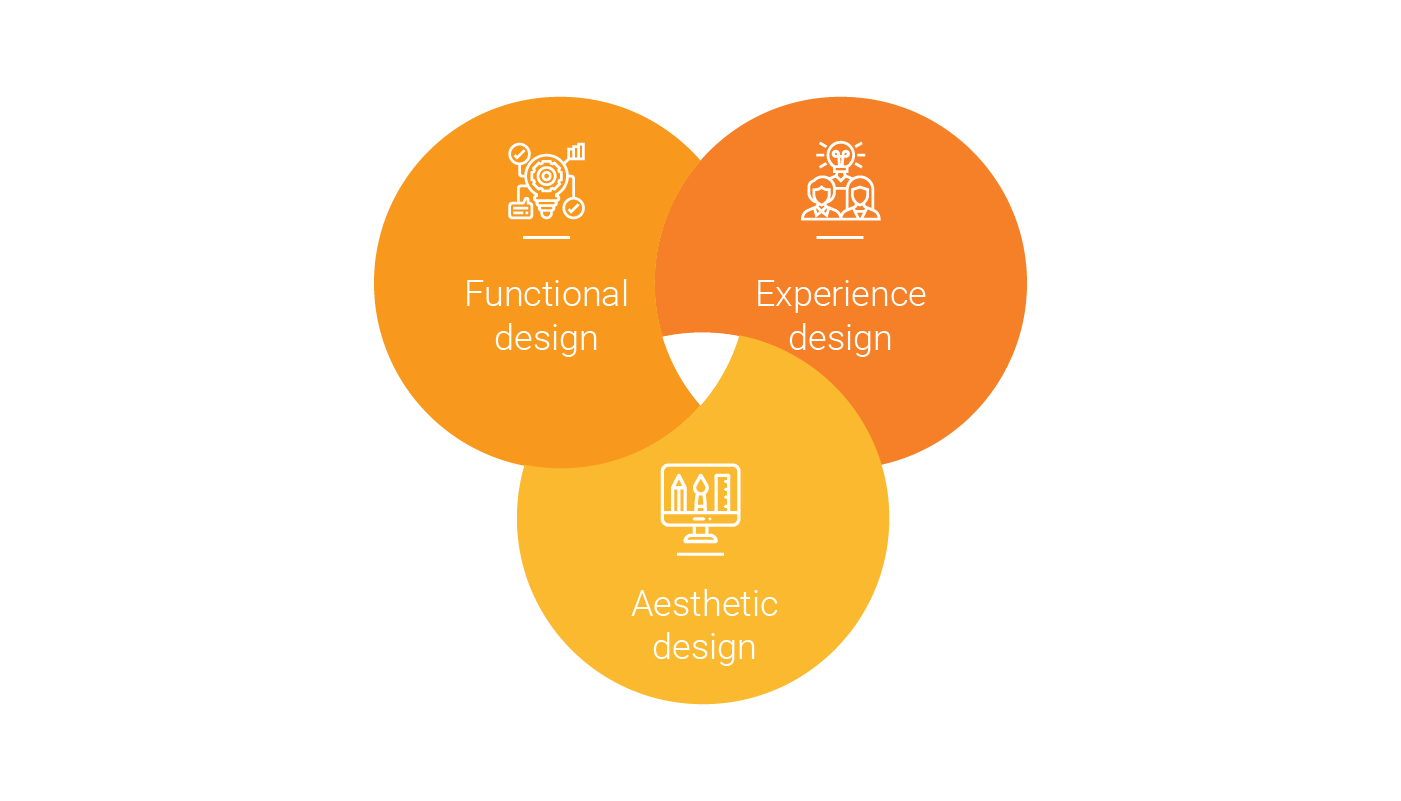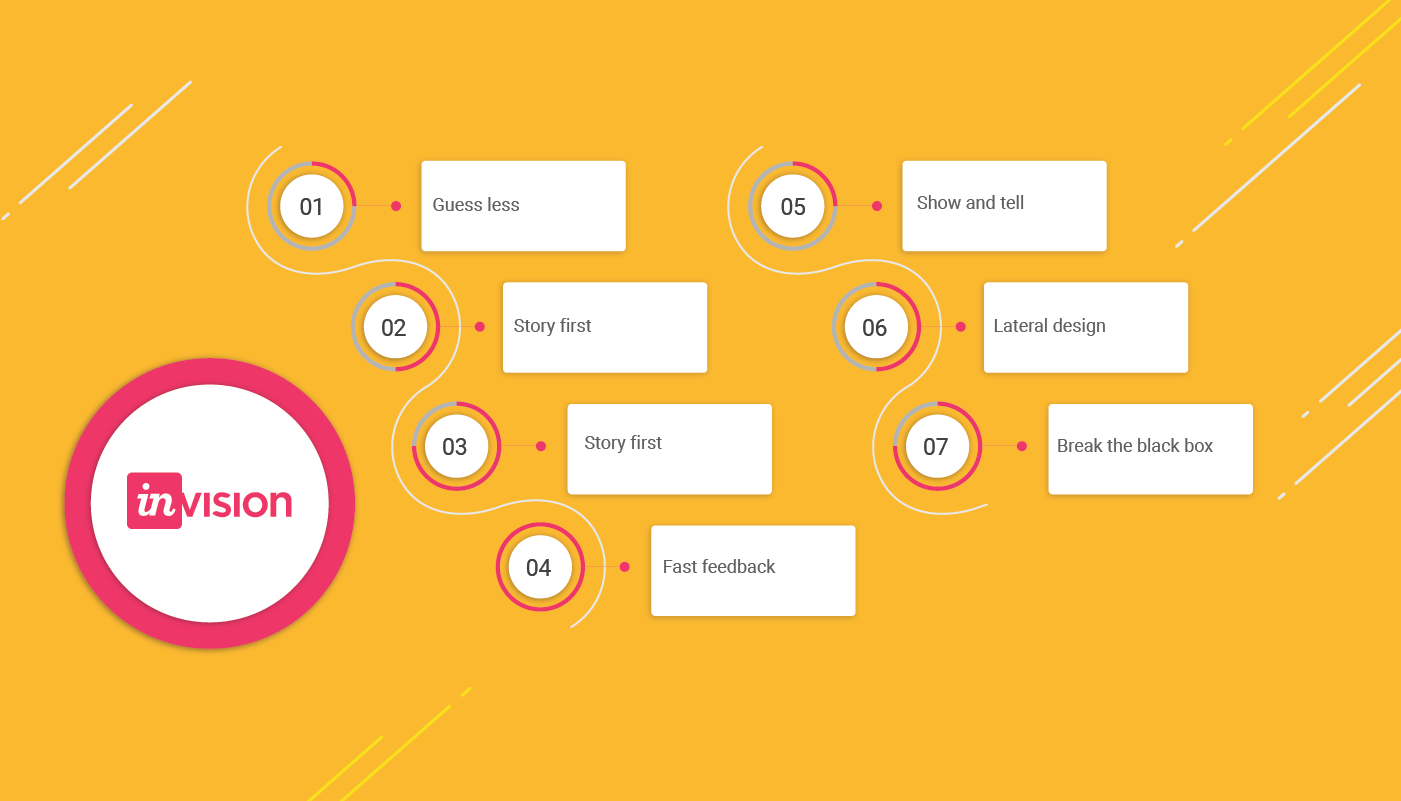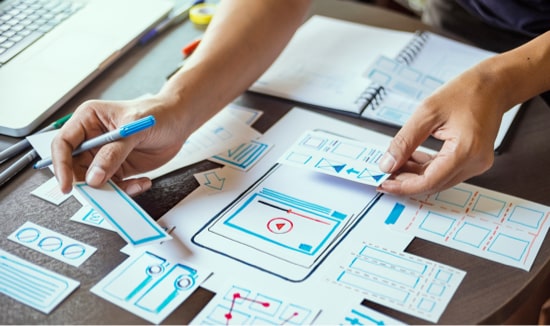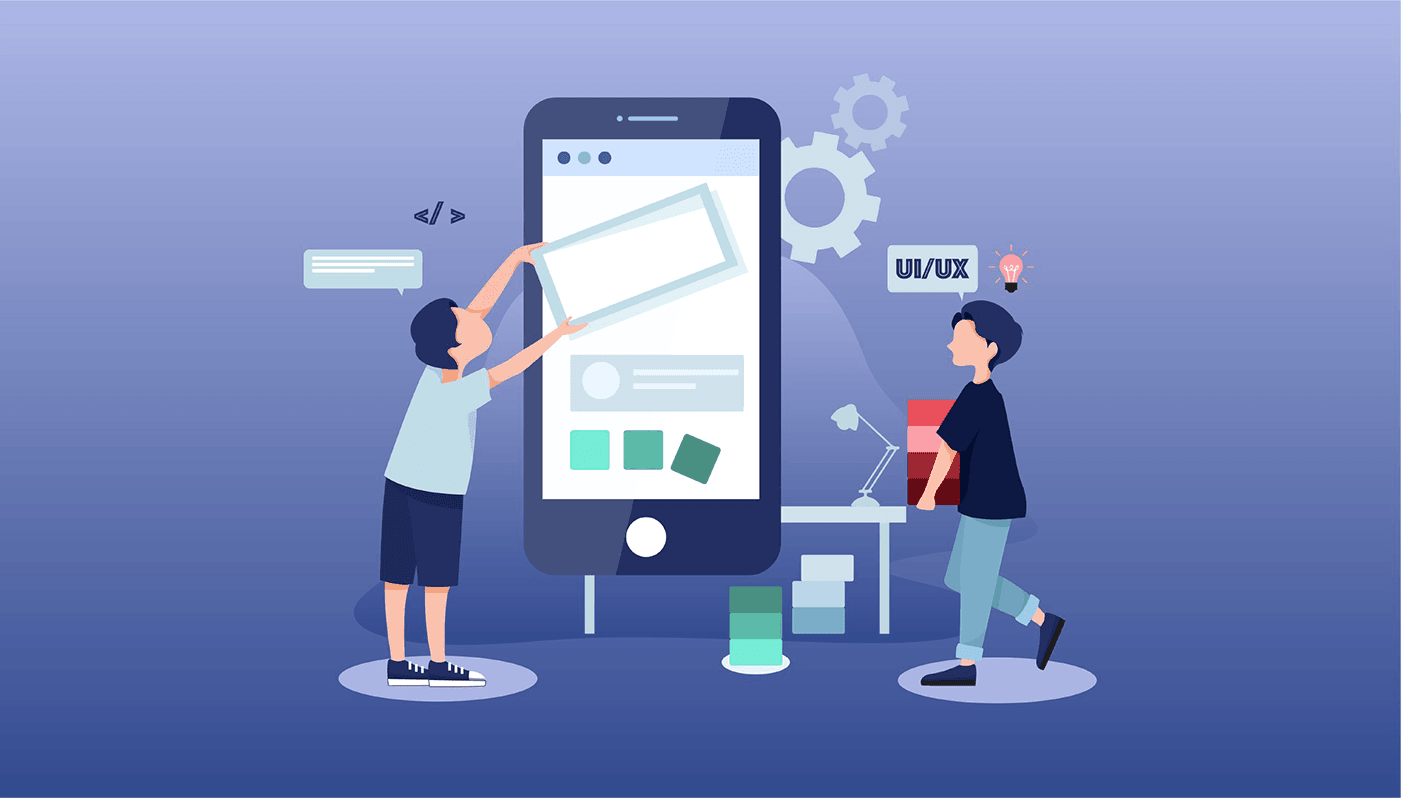You probably know that there is no other industry that is as successful and fast-growing as software product development. And that is for the reason! The revenue in the software market is projected to reach $698.80 billion in 2025, where enterprise software development dominates the segment. With the advancements of artificial intelligence, machine learning, data science, and quantum computing, the process of developing a new software product includes research of new features, branding images, user expectations, and other essentials that influence the end product functionality. But one thing stays the same – product design basics and design principles established by every product-developing company.
Today is your lucky day and we’re going to talk about product design principles that were developed by LITSLINK’s development team and additionally give a valuable overview of product design principles at other companies such as Intercom and inVision.
So, take your notebook and pencil, and be ready to write down “workable” principles of product design.
What are Software Product and Design Principles?
Before providing any good software design principles, we need to define product design, design principles, and good software design.
Product design is the process of creating a product that aims at solving the user’s problems and needs and providing them with an effective solution. In our case, we aim to discover software product design principles and its philosophy.
The word “principle” means “a basic idea or rule that explains or controls how something happens or works”. So taking these two things into account, we may assume that product design principles are a set of rules that help teams create applications in the most efficient way possible.
While we usually use the term “software design”, the development team always thinks of a good product with a good design that is both useful and highly functional. So, what is a good software design?

Good software design can be defined as the process of creating software systems and mobile apps that are reliable, efficient, scalable, and easy to maintain. It involves making informed decisions about the structure, architecture, and software components to ensure that it meets the desired requirements and performs optimally. Key features of good software design are:
-
Modularity
Good and modern product design is modular, meaning it is divided into separate components or modules that can be developed, tested, and maintained independently.
-
Scalability
A well-designed software system should be able to handle increasing workloads without compromising performance or stability.
-
Flexibility
A good software design should be flexible enough to accommodate changes and additions without causing extensive modifications to the existing codebase. This flexibility enables developers to adapt to shifting requirements and market demands effectively.
-
Maintainability
Maintaining software systems over time is a significant aspect of the development lifecycle. Good software design focuses on creating clean, well-structured code that is easy to maintain and update.
-
Performance
Performance is a critical factor in software product design. Well-designed software systems are optimised for speed and efficiency, providing users with a seamless experience. Performance considerations should be integrated into the design from the outset to avoid costly optimizations later on.
And now it’s time to jump into the world of LITSLINK’s product design philosophy or simply saying principles.
Top Software Product Design Principles at LITSLINK
Evgeniia Liuts, a lead UX/UI designer and a Nielsen Norman Group certified professional, provided us with her team’s product design principles that have been honed and tested for years at LITSLINK.
“We highly value the very synergy between functional, experience, and aesthetic designs, which are responsible for what the product is created for, how the end-user is going to interact with it, and how it looks, respectively”.
LITSLINK professionals realize the great importance of product design, workable and trending user interface, and product successful launch. That’s why we form teams of product designers that are capable of delivering end-to-end projects, and exercise flexibility in tailored-made approaches to meet the client’s and end-user’s requirements and needs. To achieve this, we single out and follow eight top principles of a good product design:
-
Don’t Create Design, Solve the Existing Problems
Visual design is a significant part of any mobile app or website application, but it’s not always of prime importance. It might sound highly improbable and ridiculous but let’s put it from a different perspective. Just imagine an Uber-like app that can’t perform its main function — help riders reach their destination points. No one would pay attention to the awesome design of the app.
A cumbersome, counterintuitive, and time-consuming application can cause irritation, frustration, and disappointment, no matter how amazing it looks. Therefore, you should always think about how you can solve problems for the user in the first place.
-
You are Not Your User
We’re all sometimes inclined to forget this principle, no matter what we do. We might think that this or that feature will be quite useful in an app, but the end-user might find it out of place. And what we’ve planned might be totally pointless and impractical for them.
For this reason, we must not rely on our understanding and vision of a software product. We should conduct thorough research on user behaviour and tailor the product accordingly.
“Observe first, then create” — this is our motto.
-
Create Simplicity and Intuitiveness
Simplicity and intuitiveness must go hand in hand when creating product design. The user should resolve his or her pain points or problems in a simple and intuitive manner without spending much time figuring out how the product works and what steps are needed to be undertaken to resolve a problem. Hence, we must create practical solutions for users.
-
Follow UX Fundamentals
Designers should always follow the best UX practices and avoid using non-standard and intricate ones. We believe that it’s much more efficient to follow established fundamental practices that have been tested multiple times and are used every day. Thus, people get used to a familiar pattern and perception.
-
Create Positive Emotions
Creating a product that is functional and appealing is the number one priority of product software development. The other thing which is no less important is the emotional side of it. A software product should also evoke emotions and our task is to make sure these emotions are positive.
-
Great Products Need Great Collaboration
Behind every successful product stands an outstanding team, where each person thinks about all the nitty-gritty details that lead to the desired outcome. Software designing plays a vital role in the whole process of development as it heavily impacts the whole process of development. As a result, UX/UI designers, project managers, software engineers, and business analysts collaborate with one another at every step of software development.
What is more, each person who takes part in the product development has the app on his or her mobile phone in case someone else has any questions about the application.
That’s why collaboration is key in creating and launching products that make a real difference.
-
Use Flexible Approach
Product designers at LITSLINK don’t use conventional approaches and patterns in creating products because every product is unique and therefore it requires to meet the individual needs of a client, end-users. Product designers also take into account the specifications of each and every product.
We apply flexible approaches to create products.
-
Deliverables Matters
We do care what we ship. The final result matters a lot because we feel great pride in what we do. We work with an all-consuming passion, full involvement, and absolute commitment.
Here are the basic principles of product design we apply and follow at LITSLINK. And now we can move on to two companies that also promote their product design principles.

Principles at Intercom for Designers
Intercom is a US software company that provides a platform for communication between businesses and their users through various channels — email, chat, website, and/or app. They also use eight main principles to create a really awesome product design — mixing the main five design principles into the product design itself and the other three belonging to software engineering.
1. Think Big, Start Small
Think big, start small principle is your how to eat an elephant saying in product design. If you have an idea for an intricate product, you should start with a small part of it. A minimum viable product is a perfect example of this principle in software development.
2. Ship to Learn
Once you’ve shipped a product it’s never finished. If it proves to be successful, it’ll be constantly evolving and becoming better and better.
Be also ready to fix it if there are any bugs or errors because this is inevitable.
3. Principle Three
You should always ask yourself “Why?” Why do you do it? Why do we need this feature? Why can’t we do this? If people didn’t ask such questions, they wouldn’t be able to create products that made a difference.
4. Connected, Modular System
A system consists of interconnected and interdependent elements that are properly and efficiently ordered to achieve a certain result. It consists of three main parts, which are elements, interconnections, and purpose.
5. Opinionated by Default, Flexible Under the Hood
Product designers should create simple and opinionated designs by default, but at the same time it needs to be flexible and progressive.
6. Follow the Fundamentals
You need to follow the fundamentals — the most important things of the product. What color is the app is secondary, while the mechanics behind the app are of primary importance.
7. Make it Feel Personal
Create a product with “human face,” because people want to communicate with real people and not with robots.
8. What You Ship is What Matters
You might have created an intricate design earlier but what matters the most is what your user will get in the end.
inVision Design Principles
inVision is a digital platform that allows the creation of unique designs that provide users with the most amazing user experience. Here are the seven main product design principles of the company:
1. Guess Less
This principle resonates with LITSLINK’s and Intercom’s principles. You shouldn’t design and build your product asap as you’re sure to fail. Before getting down to design, you should get to know your users first — what they want and how you can address their pain points. Create products based on what you find and not on what you guess.
At this stage, you can conduct research and interview, carry out surveys, etc., to have an educated guess of what your users really need.
2. Story First
Many people take part in creating a product — designers, marketers, engineers, project managers, and others. A story brings them all together and provides a vision of why we are creating this product for the user and how it’ll fit his or her life.
You can use videos, storyboards, etc., to create a story to showcase teams how the product will fit the life of the end-user.
3. Pencils Before Pixels
Despine being the main tool for designers, the computer does not allow concentrating entirely on the problem they are trying to deal with. So casually sketch a solution first to see the bigger picture and then move on to your computer and work on its details.
4. Fast Feedback
Product designers have to test things quickly, which means prototyping needs to be done in a quick way to obtain direct and immediate feedback from potential users. By creating a prototype, designers can validate a lot of questions and pivot if needed.
5. Show and Tell
Almost all product designers value their craft and they do want to hone it. That’s why it’s important to have feedback from your colleagues, team, uplines, and management so that you know where and how to grow.
6. Lateral Design
Similar to the “great products need great collaboration” principle promoted by LITSLINK, collaboration is paramount at inVision Designers, engineers, project managers should work together on a product and learn from each other.
7. Break the Black Box
To create design in small companies is much easier than in big ones. As the space grows, so does the misunderstanding of what anyone is doing. That’s why product designers have to communicate with other people and build rapport because all of them contribute to product creation.
Wrapping Up
To create designs most efficiently is to follow the best product design principles. But the thing is, every company has its own product design program and design principles.
Nevertheless, we see all principles intervene with one another and you can easily pick up the ones that resonate with you.







